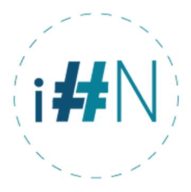Perhaps the picture is completely irrelevant to this post, but I had to type “pencil bubbles” into the Pixabay search to get a good picture, and well, this one is just so much more fun than the picture of a test. It’s time for end-of-homeschool-year testing. We all know standardized tests leave a lot to be desired, but many of us have to use them to keep up with state laws.
Testing gets a bad rap, I think mostly because we do it so badly. Is there such a thing as a good test? A helpful test, that can reveal what your student knows, where they struggle, and what you can do to help? What about standardized tests? Do any of them come with any helpful or relevant information?
Here are my thoughts about testing, along with the resources I use. There are no affiliate links in this post, I am just sharing to share, hope some of this helps you through the testing maze!
First, let’s talk about the difference between a skills-based test and a standardized test. A skills-based test takes a set of criteria and then tests your student against that criteria. A standardized test also has criteria, but instead of strictly comparing the student against what they should know at each grade level they are instead compared against what other kids at that grade level know or don’t know. So your student performs at a post-high-school reading level??? In the standardized world that just means that they can read as well as most other high school graduates. How well is that? Well, the scores for the US are bad and despite all federal attempts at reform over the years, they have remained bad.
36% of 4th-graders and 34% of 8th graders are at or above a proficient level of reading for their grade. So a high score on a standardized test when your student is being compared to a population where over 60% of students are not proficient in the basic skill needed for their grade level? Suddenly those high scores don’t seem so amazing.
This is why I recommend if you really want to know how your student is doing, give them some skills-based tests at the end of the year. If you are in a state that requires standardized testing this skills testing will probably not cover the legal requirements, although I encourage you to look up the specific laws of your state. This means you may need to pay for two tests, but skills-based tests will take you a lot farther down the road of uncovering the weak areas in your student’s skills.
My favorite standardized test is the Stanford 10. I feel this test breaks down the results a little more, so instead of just seeing my child’s grammar score, there is a list of subsections within the grammar test, and a check-mark system telling you if your child is below, at, or above average in that subsection. The Stanford 10 also comes with your child’s Lexile reading level. Knowing this level allows you to look up lists of books and you can quickly gauge what level of books your child is capable of reading and comprehending.
This is a part of the test results that break down the subjects into subsets.
I use the testing site Seton Testing because I can buy the Stanford 10 and my students can take the test online. It is not a timed test, although you do have to finish within a certain number of hours, it is plenty of time and the sections of the test are not timed themselves. (Basically, Seton is proctoring the test so you have to start and finish within their working business hours for that day.)
Seton also sells the skills-based tests that I have used over the past few years. If you have a child who is under testing age and has any struggles in reading or math, I highly recommend the DORA and ADAM K-7 (they also have pre-algebra and algebra DOMA) test by Let’s Go Learn. You can buy the tests either through Seton or directly at Let’s Go Learn.
The DORA is a skills-based reading test that breaks down reading skills into eight different areas. Each skill is tested separately, the test is adaptive, meaning the questions in each section progress in difficulty and the test will continue going until the student misses enough problems in a row that their level can accurately be determined. So your 2nd grader could have a test that says level K in one area and level 5th grade in another. This tells you which skill you need to be focusing on.
The subsets of the DORA test. The green means the score is the maximum level for that category, the numbers tell you which grade level, the decimal how far through that year.
The test also comes with detailed teacher reports which have suggested activities to strengthen the student’s skills in the weak areas. There is also another report that tells you what your child’s current reading level is. I have found this to be on the conservative side. In other words, the suggested reading level is pretty easy for my kids, and they can usually go up a level or two from there. The test purposely errs on the side of pointing out weak skills, (it would be very hard to get a falsely high score), this is because the creators of the test believe that a falsely high score in an important skill area is much more damaging to a child than a false low score.
The ADAM K-7 is similar, but it is the math test. The ADAM K-7 comes with a report that pulls up all the lessons on Khan Academy that your students need to work on. This is super-helpful even if you don’t use Khan Academy because it picks out exactly what concepts your student needs extra practice with and you can then go to whatever resource you prefer to work with and focus on that area. I find this a useful tool for closing gaps in the summer and making sure they are on solid ground for moving up to the next level in the fall.
What if you live in a state that requires no testing? Should you test at all? I really think skills-based tests are a way to focus on areas that need strengthening and that, in the long-run, it is beneficial and helpful to your student to receive the extra help they need in that weak area, so that they can thrive and move forward. If your student is excelling in all areas than you probably don’t need to test unless it is legally required.
The DORA is simple and easy for young children to take. I usually let them sit on my lap while taking the test until they are so big that my legs can’t stand the crushing😊 This helps them remain calm and happy during the test, which means the test is getting a more accurate measure of what they know. My kids love seeing how much their reading level has gone up each year, and always rush to the ‘new’ section of the bookshelf that they now know they are capable of reading. Somehow this outside test telling them what they are capable of ignites excitement, much more excitement than mom saying, go try the book, and just see if you can read it (that always gets a frustrated frown) they want to know ahead of time if the book will be easy enough for them to read or not. This outside test gives them the confidence to explore a new section of books for the summer. For that alone, I feel it is worth the cost and time.
I think if we approach testing with the right attitude, it can be helpful. First, we must realize that super high scores on standardized tests don’t mean much, and therefore we shouldn’t let that information go to our heads. Second, super low scores are just an indication of a weak area that could use some extra love next year. Third, some area’s may always be low for some students, and that is ok. Be humble, be objective, and use the information to the strengthening of your teaching and your students’ learning.
Like many things in life, tests are just a tool. If we use a hammer incorrectly, we can smash our thumb. Is it the hammers fault? Should we throw the hammer away and vow to never use it again because it is evil? Or should we look at ourselves and admit that maybe we need to approach the hammer differently. Maybe we need to learn how to use it correctly. Maybe the fault for our smashed thumb lays not with the hammer, but with our own imperfect selves?



One Response
Good thoughts on testing. I like the Stanford 10 but since we are not required to test or submit proof to the state, I don’t do so. - Lori, your neighbor on the Crew round-up